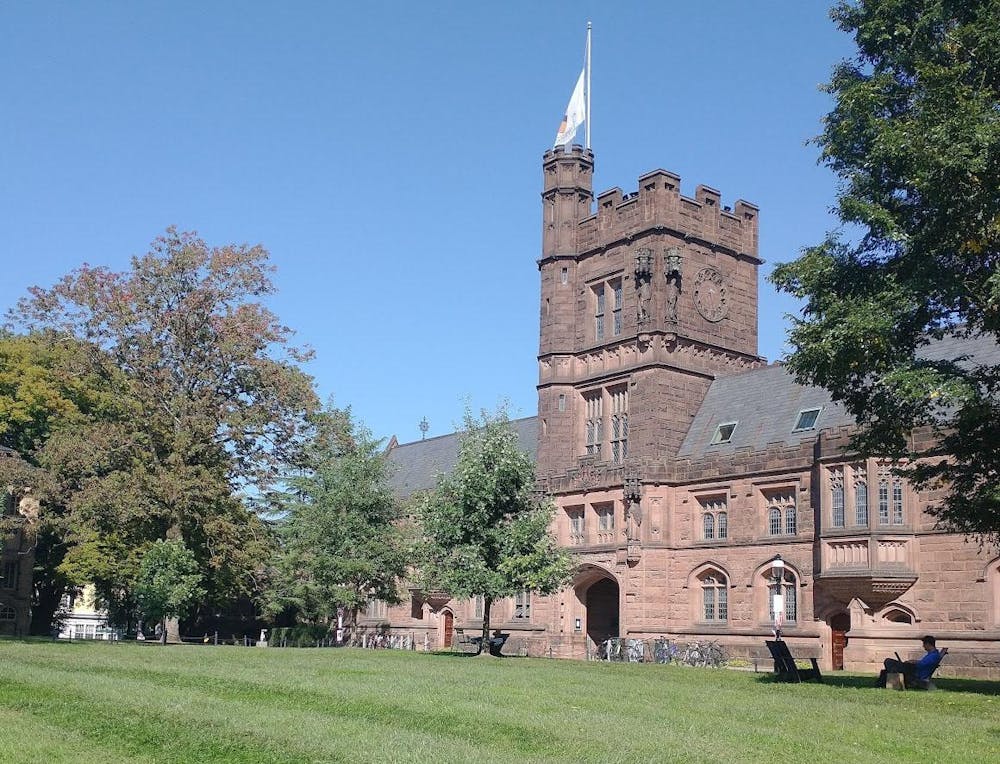Content Warning: The following article includes mention of disordered eating. University Counseling services are available at 609-258-3141.
I spent the second half of high school counting calories at almost every meal. It’s not an uncommon story — according to a 2023 study, more than one in five children and adolescents suffer from disordered eating. That’s what my therapist always called it: “disordered eating,” which felt like she was saying I was bad enough to have a problem but not bad enough for a diagnosis. It felt at times like I would wake up one day and a new bone stuck out, or another pair of pants was too big. At times I felt like I was losing my energy, my vibrancy, and myself. But it also sometimes felt like it was something good in my life, a habit that allowed a sense of control.
As I neared the end of high school, I decided that I wanted to change my eating patterns. I knew that eating in college would be extremely different, and I reminded myself every day that the mythologized “Freshman 15” — already an evil, problematic concept — would not make me a failure, despite what every college comedy show had told me. My extended knowledge of the nutritional information of everything I ate, as well as my dangerously low caloric consumption before the end of the school day would not be possible, since the “control” I demonstrated during high school involved limiting my access to food to a tiny breakfast and an only marginally larger lunch. In college, I knew that food would be everywhere.
I was right, to an extent. There were sprawling dining halls, cafes, and coffee shops covering the campus, all with seemingly infinite food and a thousand options to choose from. But something happened that I never could have predicted: Dining halls and college eating jumpstarted the healing process for my restrictive eating.
At first, I was overwhelmed by the options. For most of my meals in the first couple of weeks, I overate slightly. Any skills of moderation and listening to my body had been lost by my disordered eating in high school. However, adjustment wasn’t impossible. As someone who likes patterns, routines, and stability, I first focused on finding comfort foods. I made sure I ate three meals every day, no matter what, and used TigerMenus to prepare myself before going in. On days when eating was hard, I drifted to easy, familiar stations: prepared salads, soups, sandwiches. I refused to let myself check the macros on the Campus Dining website or ask the dining hall staff anything about the nutritional information of the food.
It’s worth noting that early in the year, I also paid a visit to the University dietician. After talking to him about my lifestyle and general activity, he gave me meal plan ideas that would meet my daily energy needs. For anyone struggling with knowing how much to eat, I cannot recommend the service enough. I don’t follow the meal ideas very often, but they gave me a frame of reference for portion sizes and food group ratios, which I desperately needed after the intense contrast of my limited high school eating and my early college overeating.
What has mattered the most is turning mealtimes into a community space. Although food culture is still important to me, meals are not only about food anymore; they’re about catching up with friends, making plans for the weekend, talking about upcoming assignments. In college, social eating prevails.
Of course, the concept of social eating was terrifying to me when I first got here. I hated the idea of eating for fun, losing control, and focusing less on the exact amount and type of food that I consume and more on everything else happening around me. With the perpetual free food events and encouragement to treat ourselves in study breaks, college culture at times feels like it revolves around food. Eating with other people can be especially intimidating for disordered eaters due to food comparison. During many meals, I have to stop myself from wondering, “How much are they eating? How much am I?”

However, I don’t like to let myself eat alone very often, and when I do, I find activities to add to the meal, like watching a video or calling my family, so that the moment doesn’t become about food exclusively. My eating and frame of mind aren’t perfect, not by a long shot. There are still days and nights where the thought of eating makes me sick and times where I feel like I can’t control myself. Brunch hours on the weekends, with their delayed breakfast and limited lunch options, especially nudge me towards meal skipping sometimes, and the demoralizing, restrictive mindset I adopted in high school can feel impossible to overcome.
But with every sweet treat with my friends and every burst of laughter during dinner, I come closer to finding peace with my eating, a peace I couldn’t get myself to work toward back home. To other people suffering from these same issues on campus, I encourage you to find ways to use food as a point of connection. For me, that shift has turned mealtimes from something to fear into something to love.
Lulu Pettit is a contributing writer for The Prospect at the ‘Prince’ who enjoys writing about food, movies, and local businesses. She can be reached at lp3153@princeton.edu, or on Instagram @itslulupettit.









